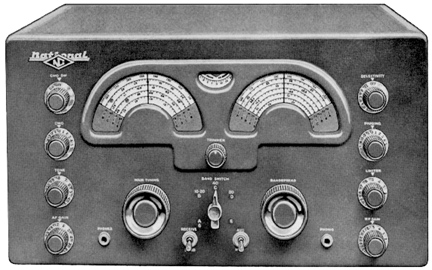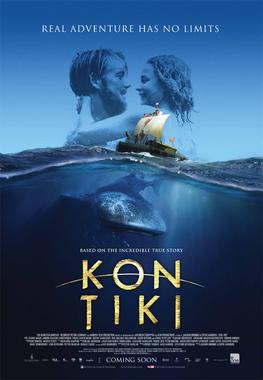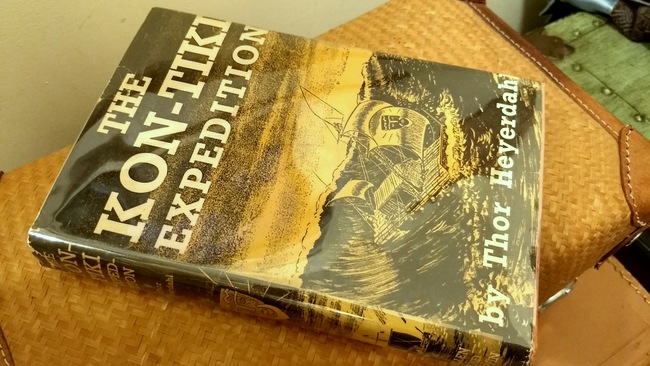Many thanks to SWLing Post contributor, Kris Partridge (G8AUU), who sent the following feedback a few days ago. Sorry for missing the boat, Kris!
Kris writes:
Just under two weeks ago I was watching a Norwegian film on Polish TV (no, don’t ask) and knowing how the sight of old radio’s in films is of interest to you and your readers I was going to write but travel and work, Passendale100 commemorations in Belgium, got in the way. The radio in question was a National NC-173 receiver. And the film Kon-Tiki.
There is much written about the exploits of the voyage and the operators of LI2B. I give as an example from PA7MDJ http://pa7mdj.blogspot.co.uk/2016/10/the-kon-tiki-expedition-and-heroes-of.html?m=1 I leave it to PA7MDJ’s most excellent blog to tell more, he has some Nation Radio Company images from 1947 illustrating his piece and at the end there is a very extensive links listing.
But another reason for writing is that tomorrow, Monday, 07 August is the 70th anniversary of the end of the voyage as the raft landed on the reef. On the 67th anniversary the ARRL did an article on LI2B, why the 67th?
What happened on the 7th of August 1947, and in the 36 hours after, says much about the build quality of the National NC-173.
How many radios today would survive a dunking in seawater and after drying out still be working?
I’ve just been to my book shelves and after a small search found my copy of The Kon-Tiki Expedition published in 1950 given to me not too many years later.
You find LI2B in the book’s index twice. Once describing the operation of the radio ‘corner’ and a very QRP contact between the raft and Oslo Norway. 6 watts CW on 13990 kc. per second, the book being written in 1949 no kHz.
LI2B had been given permission to operate out of but adjacent to as well as in the 20 metre band. The second entry concerns what happen after the raft ends up on the reef and the radio shack and equipment got flooded.
They had been in contact before hitting the reef and there was a 36 hour window before the air search and rescue operations would begin. The drying out of the equipment took no little time and the writer describes how slowly the receiver came to life but no transmitter.
Finally they were able make contact, just before the 36 hrs ended,using a WW2 hand cranked resistance, the book says sabotage, transmitter.
Both the radio operators on the Kon-Tiki had been radio operators in the Norwegian resistance in WW2, only 2 years earlier.
If one puts LI2B into Google images quite an interesting assortment of radio related images are found (click here to view search), including QSL cards but the one I like best is this http://f6blk.net/photos/LI2Bshack_x1.jpg:
I’m sure I’ve seen an English language version, this one looks slightly cropped since the end of the ‘Earth’ wire is out of vision
Regards es 73 de
Kris G8AUU
How fascinating! Thanks so much for sharing this, Kris.
Again, apologies I didn’t get this posted prior to the 70th anniversary–I’m a tad behind (understatement alert) on email at the moment.
I have a particular affinity for The Kon-Tiki Expedition. I found a 1950s copy of the book while doing my undergraduate degree ages ago.
The book played no small part in my fascination with anthropology–especially Heyerdahl’s version of “applied” anthropology. I went on to do my post grad work in anthropology at the London School of Economics. Indeed, I re-read that book before my finals to remind myself the significance of anthropology.
If you haven’t read The Kon-Tiki Expedition, I highly recommend you do so! Indeed, it’s about time I read it again.
I’m very curious how many SWLing Post readers have a National NC-173 sitting in their shack? Thor would tell you to take care of it, because it certainly took care of his crew!





It must have been powered by DC batteries. My S20-R had a plug in the back for a “vibra-pack” that supplied 6 volts and 300 volts. I recalled running it directly on a car battery and a dynamotor producing 275 vdc. It performed well but battery life barely made it on field day. Does anyone have details about the NC173?
In 1969 and 70, he had two Ra expeditions. That too had radio on board, a modified Heathkit SSB transceiver. There was an article about it in Electronics Illustrated in 1971 or maybe 72. I forget the details, but the article was mostly about the radio on the expedition. One of the crew members had radio experience during WWII, but it was a bad experience (operating behind enemy lines) so he wasn’t prepared to be technical.
Michael
Thanks for the post!
I’ve not seen the 2012 major motion picture “Kon-Tiki” but a few years ago I used eBay to buy a DVD of the original film “Kon-Tiki” released by Thor Heyerdahl in 1950. This documentary does a good job of highlighting the importance of the NC-173 to the expedition.
I also have Thor Heyerdahl’s 1950 book but it’s called “Kon-Tiki”, not “The Kon-Tiki Expedition”. I don’t know how my book differs from Kris Partridge’s book.
Eric